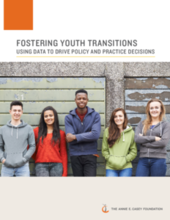Displaying 1121 - 1130 of 2176
The current article provides a framework for developing an early childhood system of care that pairs a top‐down goal for the alignment of services with a bottom‐up goal of identifying and addressing needs of all families throughout early childhood.
This article from the Chronicle of Social Change explores the work of the Vermont Permanency Survey, a project of the National Quality Improvement Center for Adoption and Guardianship Support and Preservation (QIC-AG).
Join the US Center for the Study of Social Policy on November 14, 2018 from 3:00-4:00 p.m. EST to learn more about an innovative survey designed to be used by organizations serving youth and young adults ages 12-26 to measure and improve their well-being.
This article from the Washington Post highlights findings from the Annie E. Casey report 'Fostering Youth Transitions,' which investigates the experiences of US youths transitioning from foster care to independent living.
This study examined variability in problem behavior among toddlers entering new foster care placements and identified related child and parenting characteristics.
This Annie E. Casey Foundation brief, which utilizes the most comprehensive data set ever collected across all 50 states of the US, fills in key details about the lives of young people who have experienced foster care.
The chapter describes the rationale, research support, and techniques that support the application of parent–child interaction therapy (PCIT) to American Indian families.
This chapter provides updated information about the use of parent–child interaction therapy (PCIT) with young children who have experienced maltreatment.
Utilizing case examples, this discussion paper examines foster care decisions that disrupt important child-caregiver relationships.
This manuscript relies on two studies to learn more about the experience of adolescent-aged foster youth who utilize long-term mental health services coordinated through A Home Within, a national nonprofit committed to reducing treatment barriers by asking licensed therapists to provide pro bono therapy “for as long as it takes.”

